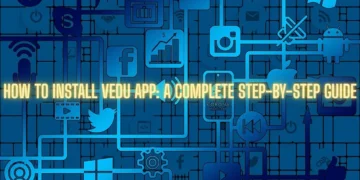Business success depends on one’s capacity for evolution and adaptation. A crucial component of this flexibility is the capacity to gather requirements effectively, a vital phase in the life cycle of any project. Firms must become proficient in requirements gathering as they pursue efficiency and innovation. Professionals who possess a Business Analysis Certification are more adept at obtaining requirements.
In this blog, we explore important Business Analysis Techniques that accelerate requirements gathering and lay the groundwork for a project’s successful completion.
Table of Contents
- The Crucial Role of Business Analysis Techniques
- Business Analysis Certification
- Business Analysis Techniques
- Stakeholder Interviews
- SWOT Analysis
- Use Case Modelling
- Prototyping
- Data Flow Diagrams
- Business Process Modelling
- Decision Trees
- Brainstorming Sessions
- Risk Analysis and Management
- Impact Mapping
- Harmonising Business Analysis Techniques
- Challenges and Evolving Landscape
- Conclusion
The Crucial Role of Business Analysis Techniques
Understanding the importance of business analysis in contemporary organisations is crucial before diving into the techniques themselves. By liaising between project teams and stakeholders, business analysts ensure that project requirements are understood and in line with company goals. The importance of this position has grown to the point where a business analysis certification is now recognised as a mark of competence.
Business Analysis Certification
Getting a business analysis certification is a common first step in mastering business analysis techniques. This certification gives workers a well-organised comprehension of industry best practices and an extensive toolkit for efficient requirements collection. The certification process gives people the skills necessary to successfully navigate the complexities of business analysis methodologies and substantially contribute to project success.
Business Analysis Techniques
Stakeholder Interviews
The foundation of every requirements gathering approach is stakeholder interviews. This method entails having one-on-one or group conversations with important stakeholders to gain insightful knowledge about their goals, worries, and expectations. Asking inquiries isn’t enough; you must also actively listen, decipher subtleties, and grasp what demands aren’t being expressed. Certified business analysts address these exchanges in an organised manner, guaranteeing a thorough comprehension.
SWOT Analysis
SWOT analysis, which stands for strengths, weaknesses, opportunities, and threats, is a flexible tool with applications beyond strategic planning. Using SWOT analysis gives business analysts a comprehensive understanding of the situation as it stands right now. This methodology facilitates the identification of possible deficiencies and avenues for enhancement, directing the requirements collection process towards the most crucial facets of the enterprise environment.
Use Case Modelling
Use case modelling is a visual representation that helps make system needs more understandable. Skilled in this technique, business analysts develop comprehensive use cases that specify particular scenarios and interactions to close the knowledge gap between theory and real-world application. Use case modelling’s clarity guarantees that requirements are understood and shown, which helps the project team avoid misunderstandings and ambiguity.
Prototyping
It is impossible to overstate the importance of visualisation when gathering requirements. Business analysts can produce concrete prototypes of suggested solutions through prototyping, providing stakeholders with a first-hand look at the work before full-scale development. This method works exceptionally well for gathering feedback early in the process, saving money on rework, and guaranteeing that the final result closely complies with stakeholder expectations.
Data Flow Diagrams
In a world where data rules, it is critical to comprehend how information moves and interacts. Data movement Diagrams (DFDs) show processes, data stores, and the movement of data between them to give a visual depiction of how data flows within a system. Equipped with this technique, business analysts may pinpoint possible bottlenecks, redundant information, and data dependencies, guaranteeing that requirements consider the nuances of information flow.
Business Process Modelling
Creating visual representations of business processes that show the flow of inputs, outputs, and activities is known as business process modelling. This method is used by certified business analysts to find places where current processes might be improved and to find inefficiencies and redundancies. Requirements collection is made proactive via process modelling, streamlining processes and aligning project objectives with the overarching business plan.
Decision Trees
Making decisions in complicated projects can be a maze of options. Business analysts can map out different choice routes, repercussions, and possible outcomes using decision trees, a visual representation tool. Certified professionals can improve decision-making processes by utilising decision trees. This helps to ensure that criteria cover a variety of scenarios and aid in efficient project planning.
Brainstorming Sessions
Even though it’s not a novel idea, brainstorming is a valuable tool for business analysts. Qualified individuals lead organised brainstorming meetings to elicit various stakeholders’ thoughts, perceptions, and ideas. By cultivating a collaborative and imaginative atmosphere, business analysts can unearth novel ideas and requirements that may not surface using conventional approaches alone.
Risk Analysis and Management
Uncertainties are an inherent part of project management. Certified business analysts use risk analysis and management approaches to identify, evaluate, and reduce possible risks related to project requirements. Businesses can strengthen the resilience of their projects and make sure that needs are resistant to unforeseen obstacles by taking proactive measures to handle uncertainty.
Impact Mapping
Impact Mapping, a strategic planning method that links project deliverables to more general corporate objectives, is the last technique in our enlarged list. Impact Mapping is a tool used by certified business analysts to make sure that each requirement directly advances the company’s objectives. This alignment improves the requirements’ relevance and gives stakeholders a clear picture of how each component affects the project’s success.
Harmonising Business Analysis Techniques
The synergy of several ways, rather than one strategy, makes requirements gathering effective. Professionals with a business analysis certification can easily combine these methods, resulting in a smooth procedure that takes care of many project components.
Challenges and Evolving Landscape
There are difficulties in business analysis, just as in any other. The requirements gathering process needs to adjust to the ever-changing business context. In addition to being skilled in well-established methods, certified business analysts are also prepared to adopt new trends and technology, guaranteeing their applicability and efficiency in a changing setting.
Conclusion
Effective requirement gathering and communication are differentiators between success and mediocrity in business. When applied by qualified experts, business analysis techniques can act as a potent stimulant for project success. These methods form the foundation of a robust requirements-collecting process; they are not just tools. The function of certified business analysts is becoming increasingly important as the business landscape changes, guaranteeing that projects are not merely completed but surpass expectations.
Companies need to understand how valuable it is to hire experts who have earned a certification in business analysis. These individuals are well-versed in business analysis methodologies and can deftly handle the challenges of requirements gathering, which helps projects succeed in a constantly changing business environment.




























